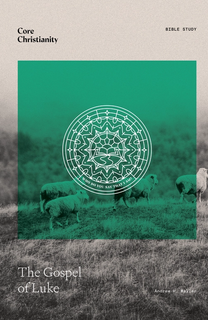Most people believe that life has a spiritual dimension. Maybe you belong to a church or mosque. Maybe you meditate. Maybe you consider the awe you feel in the mountains or the peace of a forest trail as a spiritual experience. Maybe art gets you in touch with something more meaningful than your daily grind. You may not be able to define it, but you likely think some reality beyond the physical exists.
The Christian faith, though, focuses on human bodies. Christians hope that their bodies will be raised from the dead. Everything rests on the belief that Jesus Christ rose physically from his grave.
If this didn’t happen, the Bible says, you shouldn’t believe in Christianity: “And if Christ has not been raised, your faith is futile and you are still in your sins” (1 Cor. 15:17). Without the resurrection, our sins aren’t forgiven. We’re not at peace with God. If the resurrection didn’t happen, the Bible says, Christian faith is a fraud.
So, is there any reason to believe in the resurrection of Christ? People make extraordinary claims all the time. You’ve heard about people who say they saw UFOs or ghosts or Bigfoot. The resurrection supposedly happened 2,000 years ago in an obscure part of the Roman Empire. Why should this extraordinary claim be taken seriously?
Does the Bible Want Us to Take a Leap of Faith?
The Bible expects people to want evidence. The New Testament writers never ask people to take a blind leap of faith. Luke begins his Gospel by saying he’s spoken to eyewitnesses of the events he describes. He’s writing so that his readers “may have certainty” about Jesus (Luke 1:4). He intends to offer a convincing narrative, so his readers will be sure it’s true.
Likewise, the apostle Paul appeals to evidence. He writes:
For I delivered to you as of first importance what I also received: that Christ died for our sins in accordance with the Scriptures, that he was buried, that he was raised on the third day in accordance with the Scriptures, and that he appeared to Cephas, then to the twelve. Then he appeared to more than five hundred brothers at one time, most of whom are still alive, though some have fallen asleep. Then he appeared to James, then to all the apostles. Last of all, as to one untimely born, he appeared to me. For I am the least of the apostles, because I persecuted the church of God. (1 Cor. 15:3–9)
Most of this gospel message consists of evidence. First, Paul says these events happened “in accordance with the Scriptures” (1 Cor. 15:3–4). Paul claims his message is true because it fulfills what the Old Testament, hundreds of years earlier, had predicted would happen. Second, he says that more than 500 people saw Christ after he rose from the dead. He mentions that most of them are still alive—they’re still around to verify what he says. Third, he refers to his own past. Before becoming a Christian, he’d persecuted the Christian church. If Paul didn’t really see the risen Christ, what explains his extraordinary transformation from persecutor to apostle?
The gospel message hinges on historical events. So, the Bible tells readers why they should believe these things really happened.
But Why Should We Believe the Bible?
The Bible appeals to evidence. But so does the guy who saw Bigfoot. He wants you believe his eyewitness report. He backs it up with his grainy photo of something brown. Does the Bible do any better? Should we believe the New Testament?
First, few current scholars dispute the fact that Jesus Christ lived in Palestine somewhere between 10 BC and 40 AD and died on a Roman cross. Roman and Jewish sources outside the Bible refer to these facts. The New Testament describes a historical figure.
Second, the disputed issues—who Jesus was and what he taught—aren’t simply about facts. When we approach the New Testament, or any text, our beliefs affect how we read it. For example, some people believe miracles just don’t happen. The supernatural doesn’t exist or at least doesn’t mess with the laws of nature. In the past couple of centuries, this belief has often been based on another belief: As modern people, we’re not duped by such claims. We know better. The philosopher Alvin Plantinga calls this “as-we-now-knowism.”
If you approach the New Testament with these beliefs, you’ll explain away any historical evidence you find. Your beliefs limit what you’ll accept as a fact. Many modern scholars have rejected the historicity of parts of the Bible, but “as-we-now-knowism” often controls their reasoning.
Third, we accept eyewitness evidence, which the New Testament relies on, in many other situations. We admit it in law courts. We use it in all other historical research. If we’ll give weight to this kind of evidence in other cases, we should take it seriously when we read the New Testament.
So, we can be confident that Jesus existed, that much modern Bible scholarship has been shaped by “as-we-now-knowism,” and that the eyewitness evidence in the New Testament deserves a fair, careful evaluation.
What’s the Evidence for the Resurrection?
1. Jesus’ Empty Tomb
Jesus’ disciples didn’t expect him to be resurrected. When he was crucified, they scattered and lost hope. When Mary Magdalen found the tomb empty, she assumed his body had been taken by someone (John 20:2). No evidence suggests, therefore, that they made this claim up. They found an empty tomb and didn’t know what to think.
The Bible also says that the soldiers guarding the tomb told the Jewish leaders what had happened (Matt. 28:11). The leaders paid the guards to say that the disciples stole the body (Matt. 28:12–13). So, the enemies of Jesus also knew the tomb was empty.
All the evidence suggests that everyone at the time knew the tomb was empty. The only question was how to account for it.
2. Jesus’ Appearances after the Resurrection
As mentioned above, Paul claims that over 500 people saw Jesus after he died. Even one eyewitness can be enough to convict someone of a crime. If more than 500 people saw the risen Jesus, it’s very hard to explain away. Paul’s letters are the earliest New Testaments documents, so he’s referring to relatively recent events. He claims many of the witnesses were still alive, which means his readers could still ask them to confirm what Paul said.
These appearances, according to the Bible, weren’t just visual. There’s no evidence for the theory that Jesus’ disciples shared a mass hallucination. The risen Jesus ate with the disciples and handed them food (Luke 24:30; John 21:13). He invites them to touch him (Luke 24:39; John 20:27). Clearly, if the Bible claims that Jesus’ tomb was empty, it intends to portray his appearances as physical.
These appearances explain the empty tomb better than any other theory. In addition, an enormous number of witnesses claimed to have experienced a phenomenon that undermined their messianic expectations.
3. The Creation of the Church
Why didn’t Jesus’ followers disband and disappear from history, like those of others who claimed to be the Messiah? Why did their despair at his death give way to hope? Why did they commit their lives to the belief that Jesus rose from the dead? Why were so many willing to die for this belief? What accounts for all these effects on his disciples?
The most plausible explanation is that something extraordinary happened. The New Testament writers claim that the resurrection makes sense of these things. Any other explanation is speculative and implausible. The evidence in the main historical documents we have—the New Testament—accounts for what happened. It best explains the existence of the church.
What Does This Mean for Us?
To trust that the resurrection occurred means you believe it happened. You’re affirming a claim. Christian faith depends on this intellectual assent. But we’re not mere observers. We’re not just curious about an odd phenomenon. The Bible demonstrates the reality of the resurrection so that we’ll entrust ourselves—our bodies and souls—to Christ. When Jesus invites Thomas to put his hands into his sides, where a spear had pierced him, Thomas says, “My Lord and my God!” This is Christian faith.
Jesus wants us to trust in the resurrection so that we’ll trust in him. He invites us to examine the evidence so we can, like Thomas, worship him as our Lord. The resurrection proves to us that Jesus is the Son of God, that he’s forgiven our sins, and that we’ll also rise again—to live with him in glory and joy forever.
What Does the Bible Say?
- The Empty Tomb: Matt. 28:1–7; Mark 16:1–8; Luke 24:1–12; John 20:1–10
- The Appearances: Matt. 28:9–10, 16–20; Luke 24:13–50; John 20:11–31; 21; Acts 1:1–11; 9:1–18; 22:1–11; 1 Cor. 15:1–11
Recommended Resources
- The Case for the Resurrection of Jesus, by Gary R. Habermas and Micheal R. Licona
- More Than A Carpenter, by Josh McDowell
- The Case for Christ, by Lee Strobel
- Jesus and the Eyewitnesses, by Richard Bauckham
- The Resurrection of the Son of God, by N.T. Wright










